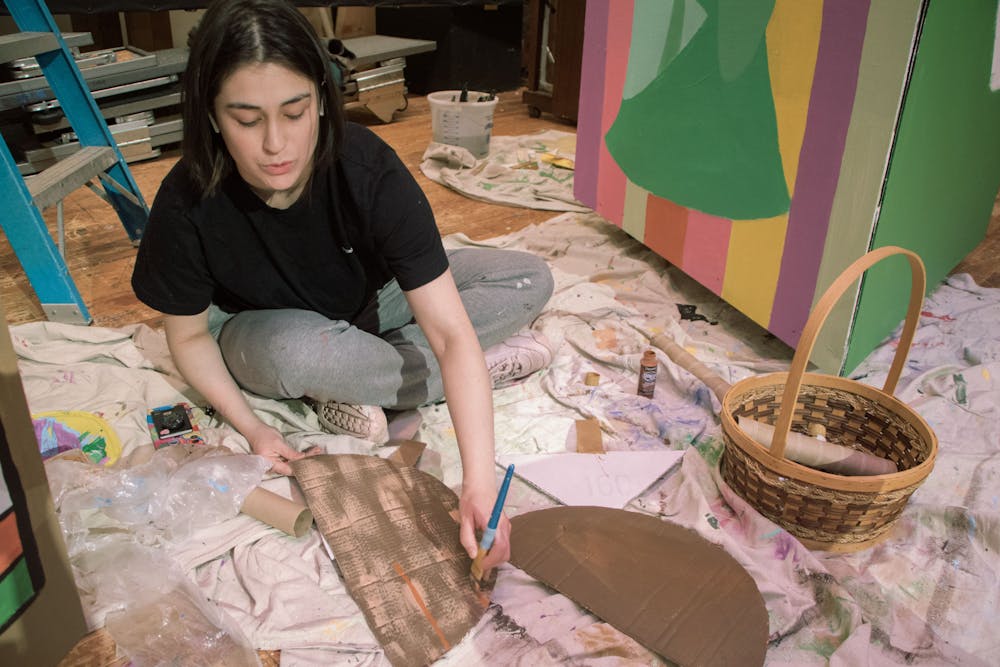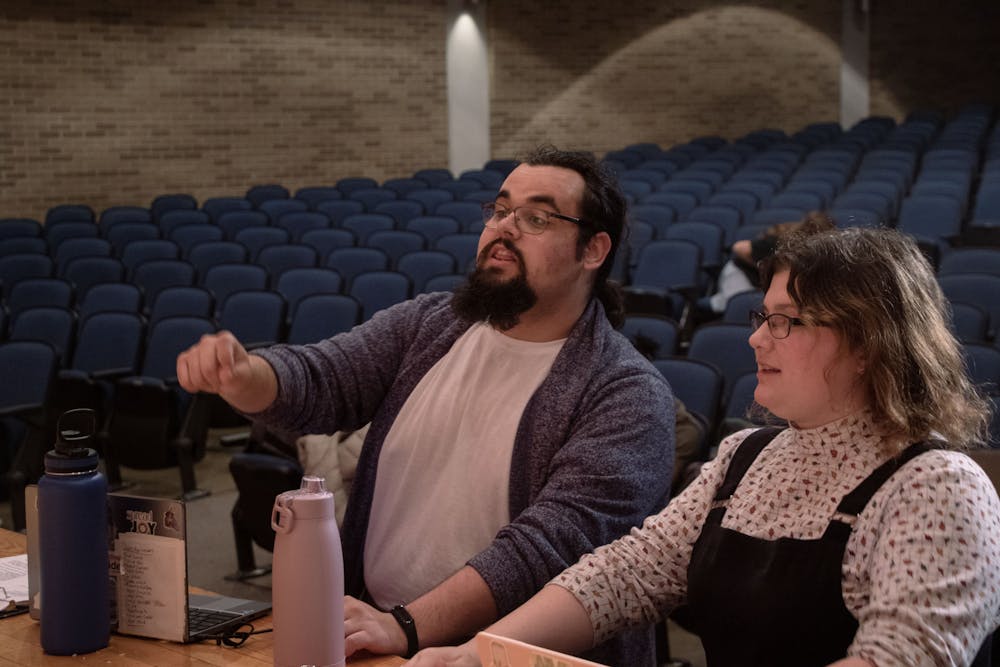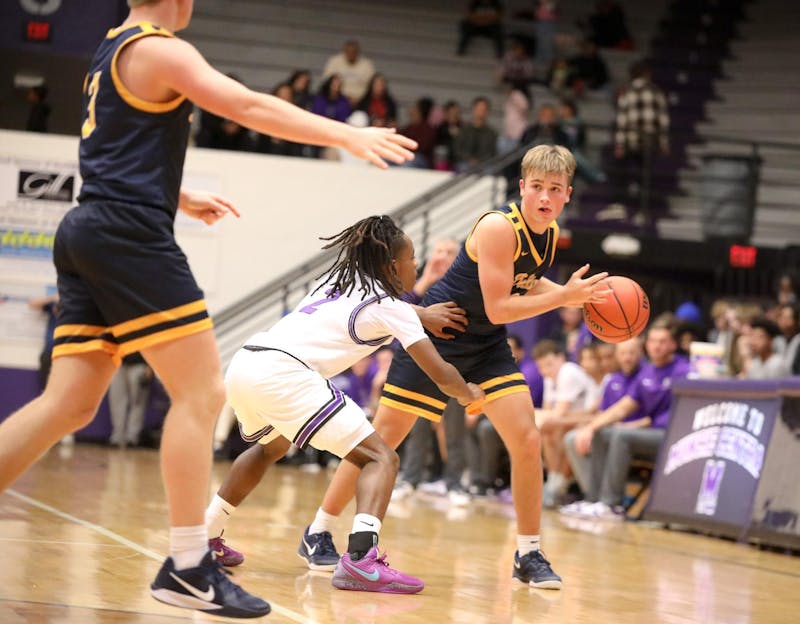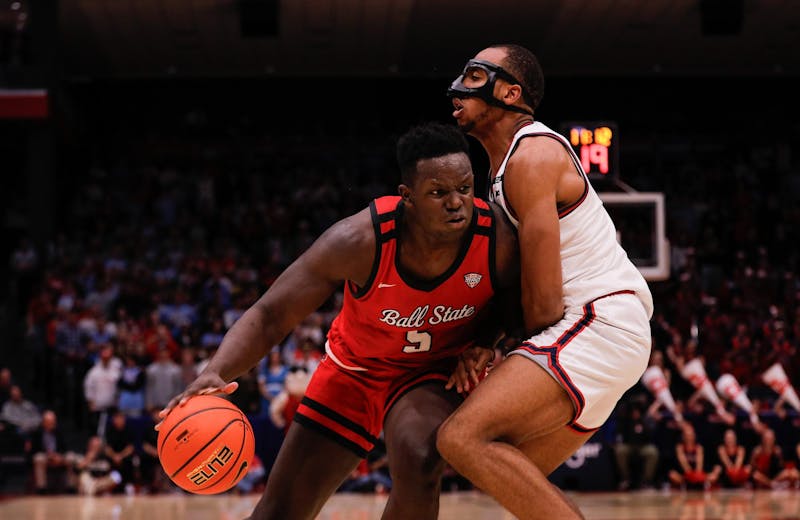Editor's Note: This story is part of The Partnership Project, a series of content written in an effort by The Daily News to follow the formal collaboration of Ball State University and Muncie Community Schools. Read more in this series here.
When David Hreno was in high school, he considered himself to be a shy person, finding it difficult to socialize and make friends with his peers, he said.
When he started participating in theatre, however, he was immediately immersed in the novel experience and felt like part of the group.
Now, as a third-year theatre education major, Hreno wears the hat of director for a group of middle schoolers at Northside Middle School, putting on his own shows. Alongside Megan Templeton, third-year theatre education major, the two are doing the same thing for the Northside students: building a community for them to thrive in.
Ball State theatre education students (THEDs) fulfill their primary practicum with the support of MCS schools surrounding Ball State University. In the case of Hreno and Templeton, their practicum is fulfilled by co-directing the spring show at Northside.
The Northside spring show this year is “The Adventures of Stuart Little,” a theatrical adaptation of the children’s book by E.B. White. It follows the titular character through his youth and adolescence making friends, avoiding the family cat and adapting to life in New York as a 2-inch-tall mouse.
There are about 15 middle schoolers acting in the play, with five more making up the tech crew, moving stage elements and manipulating the lights to set the right mood for the actors to portray their characters. One of Hreno’s and Templeton’s goals is to build a small community out of the cast and crew, so they feel comfortable and confident around one another, Hreno said.
“We’ll usually have them play a little warm-up improv game at the beginning of rehearsal, so they have that chance to practice their acting skills while having fun as a group,” he said.
Just as the primary practicum is part of the THED curriculum, first and second-years are required to participate as production assistants and assistant directors respectively in middle school shows. It is a means of preparing THEDs for their own primary practicum in their third year, Hreno said.
He and Templeton are co-directors for the spring show, and they are joined by five other Ball State THEDs: one assistant director and four production assistants. With the directors at the helm, each THED contributes to the show according to their own chosen specialty.
For example, Clarence Davenport, production assistant, takes on costuming for the middle school actors, while Mya Tolley, assistant director, acts as set designer and decorates the stage elements the actors use. The Northside students answer to Ball State students, whichever role they find themselves in.
“We do our best to let [the Northside kids] know that we’re cool, but that we’re also here to work and put on a show,” Briant Lewis, production assistant, said. “We all set an example for the kids to follow.”

Even students who are not assigned to the production as part of their curriculum are welcome to lend a hand upon invitation from a THED who is working on the show, Templeton said. While she was painting the background elements for the show, Tolley invited three of her friends to help her, none of whom were theatre education majors.
“The Ball State theatre department as a whole is a tight-knit community already,” Templeton said, “and we find it fun to take on each others’ projects and just do what we do together.”
Classes like THEA 150: Introduction to Theatre Education and THEA 295: Teaching Methods are examples of other classes that prepare THEDs for directing a young cast and giving them a well-rounded education in theatre, Templeton said.
As directors, she and Hreno aim to teach the Northside students “a little bit of everything” when it comes to acting, including memorizing lines, proper intonation and stage presence.
Although it is part of their studies, Templeton and Hreno are proud of their work at Northside and find it rewarding to direct the middle schoolers, Hreno said. Seeing the students open up and come out of their shells is the part they enjoy the most, they said.
“Seeing them come up with silly jokes as a group is so much fun, and we always like to make it part of the show if it works,” Hreno said. “The way they pal around with each other as friends has a way of bringing back the inner child in me.”
Templeton and Hreno recognize this as a stepping stone in their journeys to become theatre educators, they each said. For their fourth and final years as THEDs, they have secondary practicums — otherwise known as student teaching — lined up in two high schools in Indiana.
“We won’t just be directing plays when we’re student teaching,” Hreno said. “We’ll also be teaching English classes during the school day unlike what we do at Northside. I’m so excited to have a theatre classroom of my own one day.”
While the Ball State students working in the spring show have the support of the theatre education department, they work with only one member of the Northside faculty who acts as a liaison between them and the Northside students. However, Hreno and Templeton see it not as a hassle but as an opportunity.
“We might not work with many Northside folks, but that also means that we have more creative freedom to put on our show and teach the kids everything we can teach them,” Hreno said. “We’re grateful that they trust us enough to give us that freedom.”
Contact Miguel Naranjo with comments at miguel.naranjo@bsu.edu or on Twitter @naranjo678.





The Daily News welcomes thoughtful discussion on all of our stories, but please keep comments civil and on-topic. Read our full guidelines here.